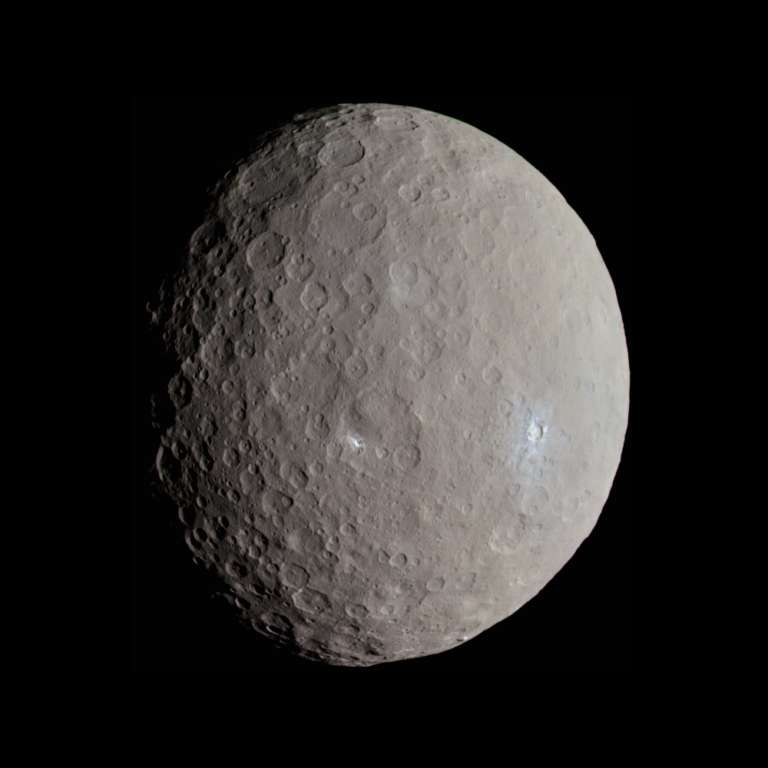Emily Lakdawalla • Oct 22, 2015
Dawn data from Ceres publicly released: Finally, color global portraits!
A few days ago, Dawn officially released the first big pile of data from the Ceres mission phase. The Framing Camera portion of the release amounts to roughly 4500 images. The data release includes everything through "Rotation Characterization 3," when Dawn was about 14,000 kilometers above Ceres and could still see the whole globe in a single photo.
This is huge news, because for reasons I've never understood, the Dawn mission has yet to release a color global portrait of Ceres. But there is a ton of data to make color global portraits, and now that it's been released, amateur image processors can do that! So, without further ado: the first views of Ceres as they might look to your eyes, if you were riding aboard Dawn.
First, one that shows the famous bright spots in Occator crater:

When Daniel Macháček made that one, he had a little fun playing with contrast and saturation to bring out some of the variety in Ceres' terrain:

And here are three more views focusing on different parts of Ceres. The first two were processed by Justin Cowart, the third by Daniel Macháček. Justin's are a little browner than Daniel's. None of these is calibrated color; the balance between channels has been subjectively adjusted until they look "right" to the individual doing the procesing.



4500 images is a lot to wrap one's head around, so I downloaded the index tables and created a set of web pages that helps you browse the data. In addition to the colorful Rotation Characterization 3 global images, there was another set taken through clear filters as Dawn took an excursion over the night side of Ceres, seeing its disk at very high phase. Here is the highest-phase image in the collection, showing Ceres as a skinny crescent.

With 4500 images, there are plenty of possibilities for image processing fun. There are many more color portraits to be made, as well as animations of the rotating globe, and comparisons of features seen at different angles and under different lighting. Playing around with contrast can reveal subtle features on Ceres' plains. Use this map of Ceres' feature names (PDF) as your guide, and have fun exploring!
Support our core enterprises
Your support powers our mission to explore worlds, find life, and defend Earth. You make all the difference when you make a gift. Give today!
Donate

 Explore Worlds
Explore Worlds Find Life
Find Life Defend Earth
Defend Earth

